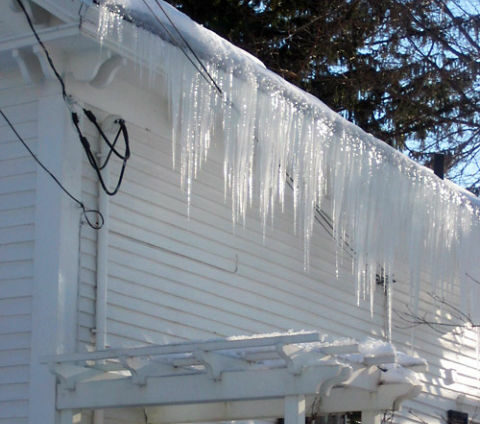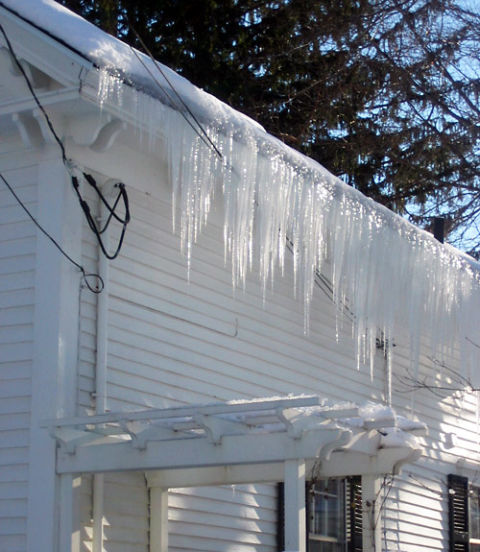

But if you are like most of us, your roof was packed under several feet of snow from January on, which led to a thick buildup of ice along the edge and in the gutters. The ice dam and glittering icicles are a hazard to all who walk beneath them. More importantly, an ice dam can cause melting snow to back up under the edge of your shingles and seep into the house.
Water on the loose in your home can result in stains on ceilings and walls, sagging wallboards, and even rotted wood framing. Even now that winter is ending, moisture remaining in your home can turn into mold and mildew that presents a health hazard and is difficult to remove.
While it is too late to do anything about this year’s ice dams, now – while the sun is shining and snowfall is far away – is the right time to take steps to prevent the problem from happening again. But first you should know what causes ice dams in the first place, and why they were so prevalent during our recent difficult winter.
Ice dams form when your home’s roof deck warms up and melts the bottom layer of snow that lies on top of it. This snowmelt trickles down the roof until it reaches the edge, where it once again encounters frigid air. This causes the water to refreeze, usually in the gutter trough, where it can build up to a point that it creates a “dam” that back up the snowmelt that continues to flow down the roof.
There are several steps to take prevent this problem:
- • First, improve your attic insulation. Warm air from your home that is allowed to rise up through your attic is the primary reason the roof deck warms up. Better insulation means a cooler attic (and warmer house!), and less chance of the snow melting in the first place.
- • Your roof should also be equipped with at least six feet of a specialized underlayment called a water & ice shield. This is a rubberized layer that goes under the shingles along the lower edge of the roof. This layer helps to prevent any melted snow or ice from seeping into the home itself.
- • Finally, makes sure your home’s gutters are wide and deep enough to handle the expected load. Keep them clear of leaves and debris, especially before the first snow starts to fall.
These simple steps can help prevent the formation of ice dams next winter, or minimize any damage if they do form.
Now, if we only had a solution to clearing snow and ice from the driveway!
For help in preventing ice dams from returning next winter call us toll free at (800) 851-0900. Or visit out website at https://hitechcorp.biz/.
- Category: Roofing Contractor
- 0 comment
